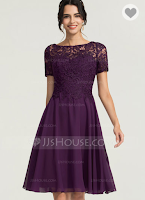7 different types of 21st-century artists
If you've gone to school for music, music theater, acting, dance, composition, etc, you have likely been exposed to the following pipeline:
- Apply to a BFA, BA, BM
- Get good grades, some performance opportunities, and maybe a notable gig or two
- Apply to internships known as YAPS or Summerstock or Tanglewood, etc
- Freelance after undergrad while continuing to do the above bullet and probably having some kind of stable side-gig
- Go to grad school
- End up with lots of debt, experience, and handsome resume but only rejections to prove for your 5-10 years of intense training
This cycle is enough to break the strongest of artists especially if those artists did not come from wealth or a family member in the industry. Also, isn't it, like, super stale and predictable? Of course there's not a lot of room for people: it's meant to be exclusive and quite frankly, it's not very diverse. It's hard to be true to yourself when there's a specific expectation for traditions that are 100+ years old.
And let's be real, this cycle will be the demise of certain art traditions.
BUT, there is good news. WE DON'T HAVE TO BUY INTO IT. (Literally). Here are 7 ways to be a 21st-century artist:
1. Write your own stuff.
Photo Cred: Canva
If it's always felt a little weird to sing someone else's words, I feel you. Experiment with writing your own music! There are so many amazing resources available now to get you started on your journey. Some amazing apps that don't require a lot of music literacy include: Song Wizard, Writers Session, Rhyme Desk, Garageband, Suggester, and Songwriter Pro. Once you become a wiz at those, check out Audacity and Logic (software for computers). OR if you are great with chords, just whip out your ukulele, guitar, or piano, and a notepad.
2. Use multimedia
Photo Cred: Canva
What's cool about using multiple forms of media is being able to breath new life into previous works. You can now project slideshows or silent films as a backdrop to a lyrical dance, create stop motion videos for an art song that your recorded, create digital art exhibits, etc. The combinations are endless.
3. Write arrangements of pieces
Photo cred: Pablo
Sometimes, it can be difficult to know where to start when writing your own works. Sometimes, it can be easier to pull from pre-existing material and rearrange it. Perhaps this means using different instruments from the original version, adding voices, changing the meter and tempo, changing the tonality, etc. Garageband, Audacity, Finale, and Sibelius are great for arranging.
4. Perform in unusual places
Photo cred: Pablo
Performing does not need to be confined to a stage or recital hall. Take a play outside, bring an opera to a restaurant, dance in the park, etc.
5. Repurpose old works
Photo cred: Pablo
Hear me out on this one: not all older music should be resurrected. There are some things that need to stay relics of the past. But if you find Rachmaninov poignant and want to find an outlet to perform his works, do it. It can be a digital platform or an unusual setting. Or maybe you want to modernize a jazz standard, throw some pop vocalization in there. Get it.
6. Collaborate
Photo cred: Pablo
I have two friends that are currently collaborating on a musical. One of them is a composer and the other has a talent for beautiful, poetic writing. They are BOTH individually musical and poetic but combining their two powers has yielded a powerful collaboration. It can be overwhelming to always do things yourself. Collaborate!
7. Be a muse (or a find a muse)
Photo cred: Pablo
In the same vein of collaboration, if you have a particular soundscape in your mind for a piece of music, find folks who play that way! If you have a particular way you like to sing or dance, find a composer who needs a muse!
And these are just the first 7 ideas that came to mind. Please comment with other non-conventional paths you've taken as 21st-century artist!









Comments
Post a Comment